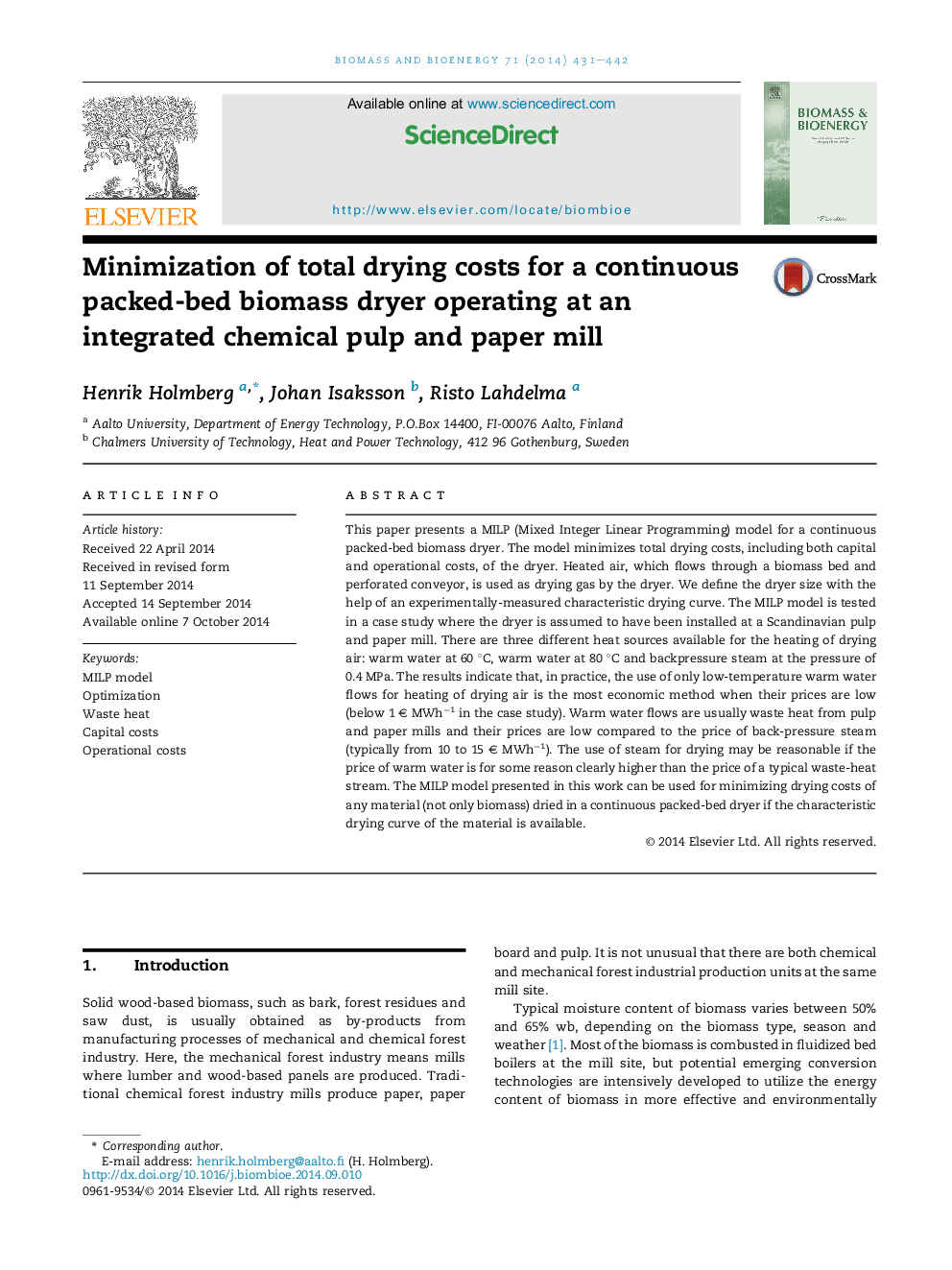| Article ID | Journal | Published Year | Pages | File Type |
|---|---|---|---|---|
| 676841 | Biomass and Bioenergy | 2014 | 12 Pages |
•A MILP model has been developed for a continuous packed-bed biomass dryer.•The model minimizes total drying costs of the dryer.•Low-temperature waste heat is the most economic heat source in most dryer cases.•The same MILP model can be used for other materials dried in a packed-bed dryer.
This paper presents a MILP (Mixed Integer Linear Programming) model for a continuous packed-bed biomass dryer. The model minimizes total drying costs, including both capital and operational costs, of the dryer. Heated air, which flows through a biomass bed and perforated conveyor, is used as drying gas by the dryer. We define the dryer size with the help of an experimentally-measured characteristic drying curve. The MILP model is tested in a case study where the dryer is assumed to have been installed at a Scandinavian pulp and paper mill. There are three different heat sources available for the heating of drying air: warm water at 60 °C, warm water at 80 °C and backpressure steam at the pressure of 0.4 MPa. The results indicate that, in practice, the use of only low-temperature warm water flows for heating of drying air is the most economic method when their prices are low (below 1 € MWh−1 in the case study). Warm water flows are usually waste heat from pulp and paper mills and their prices are low compared to the price of back-pressure steam (typically from 10 to 15 € MWh−1). The use of steam for drying may be reasonable if the price of warm water is for some reason clearly higher than the price of a typical waste-heat stream. The MILP model presented in this work can be used for minimizing drying costs of any material (not only biomass) dried in a continuous packed-bed dryer if the characteristic drying curve of the material is available.
